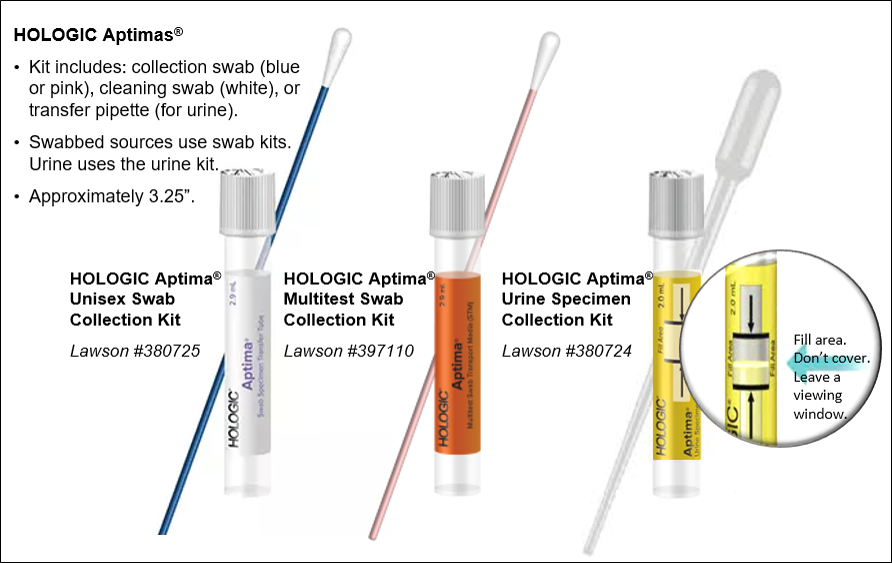
LAB4739
CTNGAMP
Genital, Rectal, Throat, or Eye: HOLOGIC Aptima® Unisex Swab Specimen Collection Kit or Aptima® Multitest Swab Collection Kit.
Do NOT dip swabs in urine.

Ambient
1–2 days
LAB4739
CTNGAMP
| C TRACHOMATIS AMPLIFICATION | Not Detected |
| N GONORRHOEAE AMPLIFICATION | Not Detected |
87491; 87591
| Collection |
LAB4739
CTNGAMP
Genital, Rectal, Throat, or Eye: HOLOGIC Aptima® Unisex Swab Specimen Collection Kit or Aptima® Multitest Swab Collection Kit.
Do NOT dip swabs in urine.

Ambient
| Ordering |
1–2 days
LAB4739
CTNGAMP
| Result Interpretation |
| C TRACHOMATIS AMPLIFICATION | Not Detected |
| N GONORRHOEAE AMPLIFICATION | Not Detected |
| Administrative |
87491; 87591